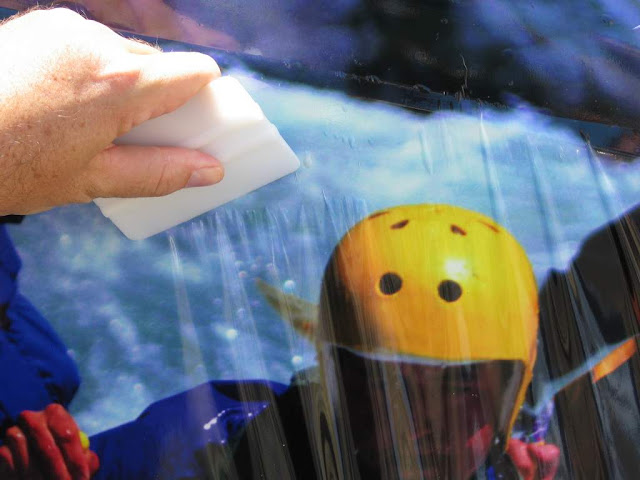In selecting an overlaminate for vinyl graphics, the general rule of thumb is: use a cast vinyl overlaminate for cast vinyl graphics; use either a calendered or cast overlaminate for calendered vinyl graphics.
Calendered vinyl, is not appropriate for a curved surface, especially one with as many curves as the bumper on a car. The reason is that calendered vinyl films have memory. If you stretch a calendered vinyl, it tends to spring back to its original shape.
For curved surfaces, such as those that you encounter when performing a vehicle wrap, you should always use a cast vinyl overlaminate. Cast films not only have the ability to stretch, but will also shrink when need. This probably sounds a little strange to you. So let me explain.
When you apply vinyl film to a concave surface, you must stretch the film so that it can reach into the corners. Keep in mind that when you stretch something it becomes thinner. Using cast vinyl media with a cast vinyl overlaminate is the right product solution for this application.
Cast vinyl films possess very little mechanical stress, because of the way they are manufactured. In applying these films, you typically heat the material to make the film more pliable so you can stretch it when you need to, but also to break the memory of the film.
After you have applied the film, you should also post heat the graphic. This secondary heating process locks the film in place. Failure to properly heat the vinyl film often leads to the film failing.
When you apply vinyl graphics to a convex surface, such as the corner of a bumper or the radius at the end of a van, you do not stretch the film to make it conform. Instead, you typically have an excess of material. In photo A below, you will notice the extra film that has accumulated as I am applying the graphic. In this situation, I have more film than I need. Trying to stretch the film is no solution and will only make matters worse. How can you eliminate this extra film? Rather than stretching the vinyl, I must shrink it, again using heat.



